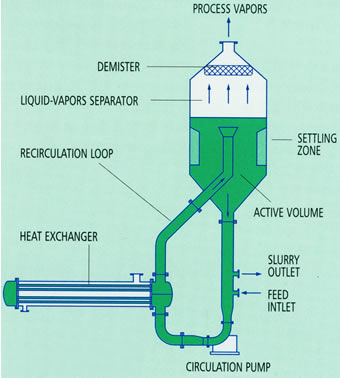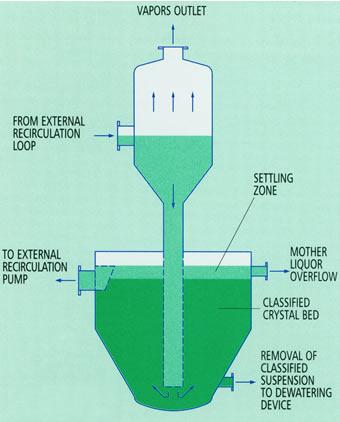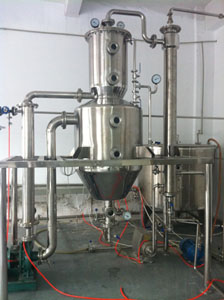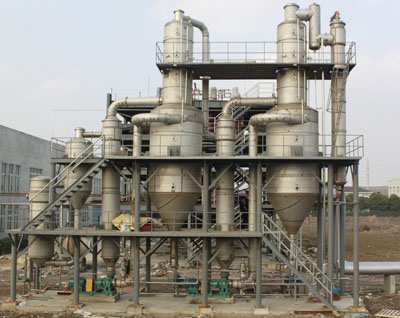OSLO Crystallizer
Oslo type crystallizer also called classified-suspension crystallizer is the oldest design developed for the production of large, coarse crystals.
The basic design criteria are twofold:
- desupersaturation of the mother liquor by contact with the largest crystals present in the crystallization chamber
- keeping most of the crystals in suspension without contact by a stirring device, thus enabling the production of large crystals of narrow size distribution
The equipment is schematically shown hereinafter :

Oslo type crystallizer
The classifying crystallization chamber is the lower part of the unit. The upper part is the liquor-vapor separation area where supersaturation is developed by the removal of the solvent (water for most applications). The slightly supersaturated liquor flows down through a central pipe and the supersaturation is relieved by contact with the fluidized bed of crystals.
The operating costs of the Oslo type crystallizer unit are much lower than with any other type when both large and coarse crystals are required. Since crystals are not in contact with any agitation device, the amount of fines to be destroyed is lower and so is the corresponding energy requirement. This Oslo type crystallizer (classified - suspension crystallizer) allows long cycles of production between washing periods.
Most of the Oslo type crystallization units are of the "close type." However, the "open" type is worth to be considered when very large settling areas are required or when the vessel must be fabricated out of high cost alloys or metals.

“OPEN” type Oslo type crystallizer


Typical products are:
- (NH4)2 SO4
- Na2SO4
- AgNO3
- hydrated mono sodium glutamate
- mono ammonium phosphate (MAP)
